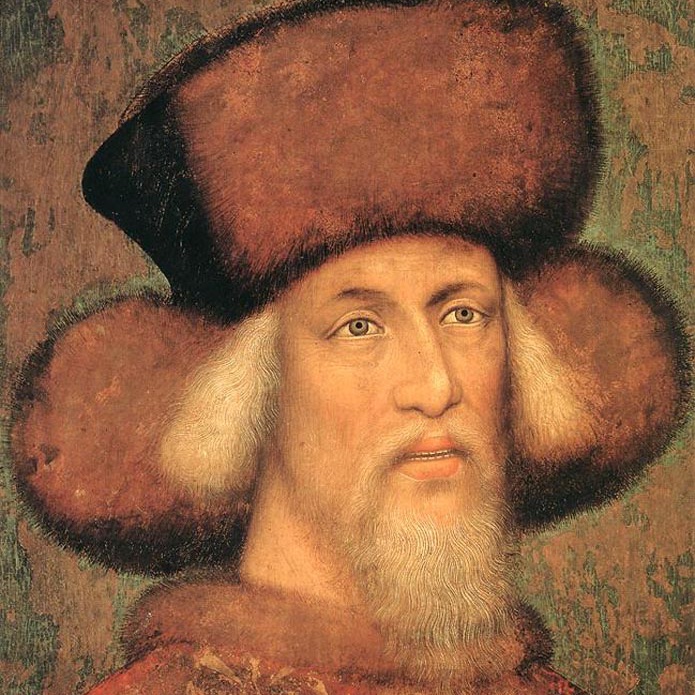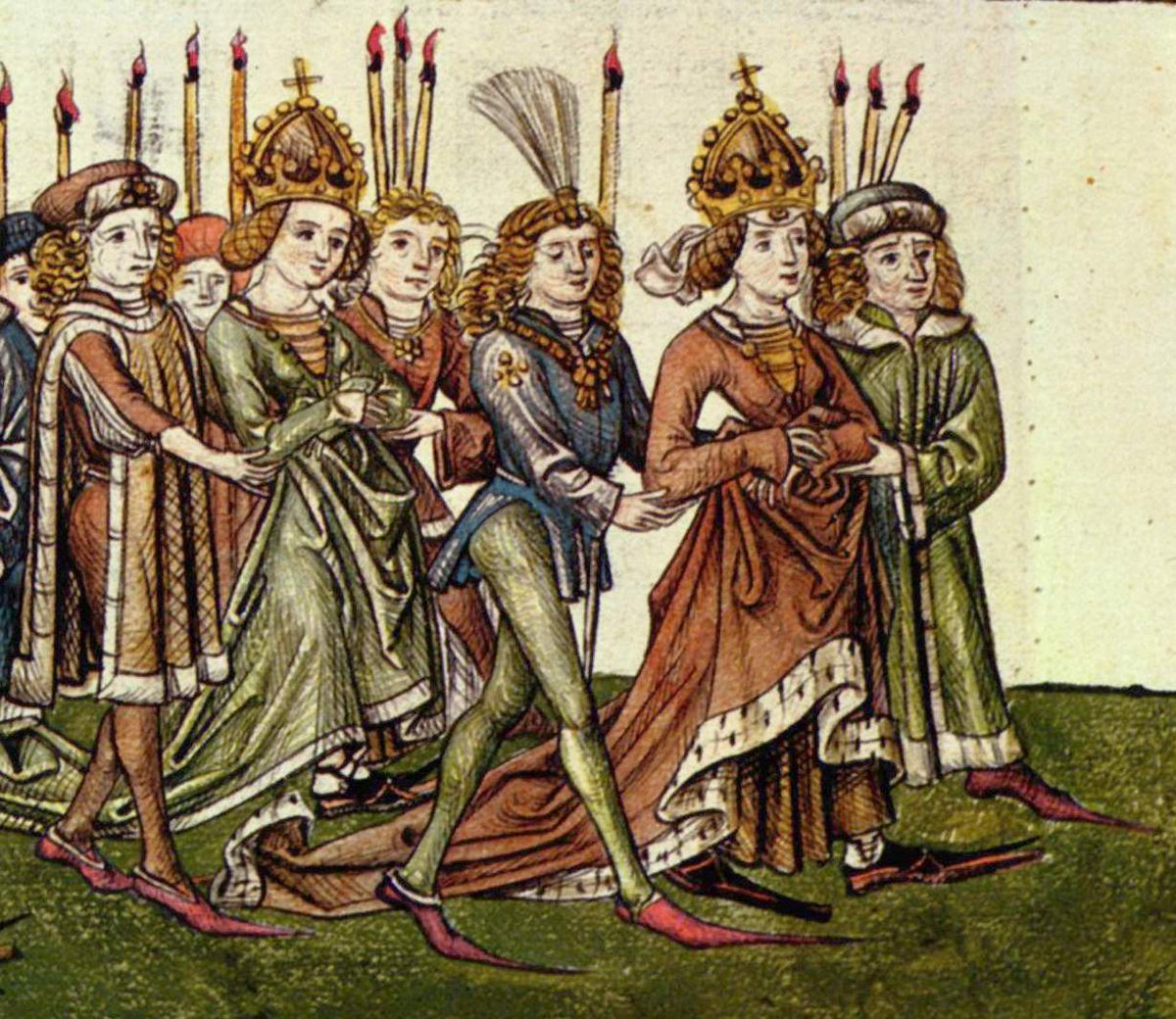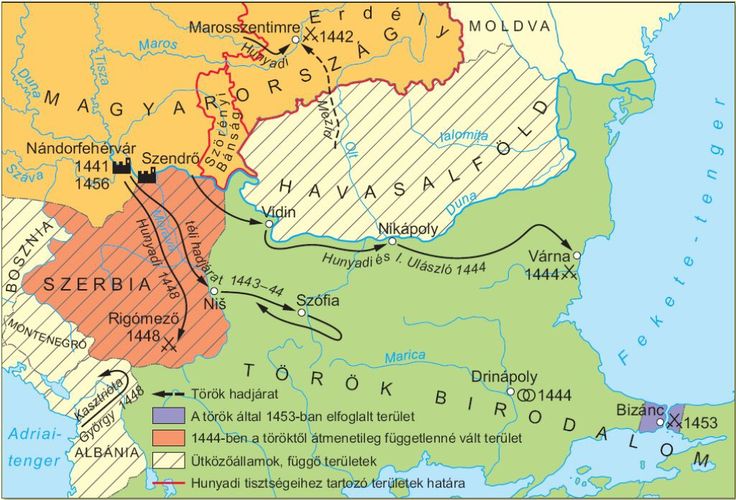
The death in Dec 1437 of Sigismund of Luxemburg, king of Hungary, Bohemia & Holy Roman Emperor threw SE Europe in a period of instability & encouraged sultan Murad II decision to launch a new offensive on a wide front along & across the Danube. 

First move was a campaign launched in Aug 1438 from Vidin area toward Hungary but quickly switched toward Transylvania. Vlad II Dracul, voievode of Wallachia (1436-1442 & 1444-1447) had been forced to joined after the prior year Ottoman raid against his country.
Dracula house:
Dracula house:

Murad II avoided confrontation with main Hungarian forces to the W, sacked only 3 small S Transylvanian citadels - Câlnic👇, Sebeș & Alba Iulia but failed to take the 3 stronger ones Sibiu, Sighișoara & Brașov. Vlad II obtained the release of 50 noble prisoners but was little. 

1438 campaign saw also 2 young knights of Vlach origin, Hunyadi bros John & Johnny (John the Young)😊 being dispatched by the new king of Hungary Albert II of Austria to Severin area then under command of Croatian👇
https://twitter.com/Iulian68/status/1251319322703736834
In 1439 Albert II tried a counter-offensive but failed to even help Serbian Despot Durad Brankovic who saw his realm, including the new capital Smederevo, occupied by the Turks. Brankovic found refuge with Albert who, to make a bad year worse, himself died of disentery in Oct.🙁
Hungary internal discord deepened as the widowed queen Elisabeth (the only issue of Sigismund☝️) just delivered a boy, but many Hungarian magnates wanted a "stronger" king on the throne & supported the claim of the 16yrs old Polish king Wladislaw... oy, vey... 

In this situation young ban of Severin John Hunyadi joins the small nobility who preferred Wladislaw & emerges as the commander of that faction, defeating in Sep 1440 at Battaszek the grandees supporting queen Elizabeth& her newborn. Wladislaw rewards him w Transylvanian vvdship.
1440 was the year that the Ottomans put Belgrade under siege for the fist time. The garrison, commanded by Ivan Talovac☝️, resisted successfully & the danger was averted. At the end of the year John Hunyadi* &Nicholas Ujlaki are in charge of Belgrade & whole SE Hungarian border. 

The 2 shared the lead of Transylvania, county of Temes& carried out in Sep 1441 an incursion in Serbia attempting to recover(unsuccessfully) Smederevo. Little John Hunyadi ☝️died in those battles & was subsequently buried in Alba Iulia's St Michael's Catholic Cathedral.
The Ottomans in response ready an army & in early March 1442 strike Transylvania through Wallachia along Old river valley, again with Vlad II Dracul allowing passage but not providing help which left both sides in conflict unhappy. Turks achieve surprise initially but are...
subsequently routed suffering heavy losses including the commander Mezid Bey. Transylvanian & Vlach forces commanded by Basarab II (son of former prince Dan II of Wallachia) launch in pursuit & also remove from power Vlad Dracul*, who is then arrested by Murad...
Murad could not let this slide & orders Shehabeddin the Beglerbeg ("Bey of beys") of Rumelia (=European Ottoman possesions) to strike back. Shehabeddin enters Wallachia with 80,000 of the best Ottoman troops & is severely defeated in Sep on upper Ialomița(Yalomitsa) river - 

largest field victory of John Hunyadi's career. Most Ottoman troops are killed & almost all of their gear&arms captured.
Hunyadi then vanquished other Ottoman troops at Vidin then marched through N Serbia to Belgrade & then back to Timișoara where he had his headquarters👇.
Hunyadi then vanquished other Ottoman troops at Vidin then marched through N Serbia to Belgrade & then back to Timișoara where he had his headquarters👇.

Hunyadi had another short campaign in late 1440 in Bosnia where he defeated an Ottoman force.
Olt river (autocorrect barged in... 😊)
A meeting btwn John Hunyadi & Vlad II took place in Nov-Dec 1441 in Brasov = John pressed Vlad for respecting his vassal duty toward Hungarian crown (legitimate!) while Vlad protested Hunyadi minting debased currency in Transylvania that affected Wallachia(legitimate, too!)...☺️
a look at other aspects of the rivalry between 2 men that served Hungarian crown for long periods of time:
https://twitter.com/Iulian68/status/1198670382783483904
The victories of late 1442 brought a lot of excitement in Hungary & in the Western countries. To make matters worse for him Murad suffered a signficant defeat in Anatolia. In June 1443 🇭🇺 Diet(=Noble Assembly) decrees a new campaign in the Balkans, but other than Hunyadi's...
forces, the other Hungarian grandees are slow to raise theirs. After waiting almost 2 months in Kovin/Keve (=vis-a-vis Smederevo), Hunyadi is finally joined by king Wladislaw & Durad Brankovic (who had been in Hungary for 4 years by now) & they all cross the Danube in Sep.
Basarab II of Wallachia participated in this campaign as well, but ? the size of his contingent.
The coalition defeated 5 Ottoman armies around Nis & then occupies Sofia. Serbians, Bulgarians, Albanians join in.
This is when Skanderberg defects from the Ottoman ranks.
The coalition defeated 5 Ottoman armies around Nis & then occupies Sofia. Serbians, Bulgarians, Albanians join in.
This is when Skanderberg defects from the Ottoman ranks.
However Murad II manages to rally his last remaining forces in Adrianople & sets himself in march toward Sofia while advanced units under Kasim Pasha block the Zlatitsa Pass on the road from Sofia to Beroe (Stara Zagora). Here the Xtian army is unable to prevail on Dec 12th... 

As a rough winter set in the coalition retreats toward the Danube. A rear guard victory at Jalovac, Serbia on Jan 2 seals the faith of this Long Campaign as a victory for 🇭🇺& its allies. Murad makes generous peace offers promising to return all lost territories to Brankovic.
Unfortunately all these gains were squandered within 1 year due to hubris & misplaced optimism at the battle of Varna.
While peace negotiations were ongoing Vlad II Dracul regained his throne in Targoviste by Apr with Turkish help, Basarab II being likely killed.
While peace negotiations were ongoing Vlad II Dracul regained his throne in Targoviste by Apr with Turkish help, Basarab II being likely killed.
• • •
Missing some Tweet in this thread? You can try to
force a refresh












